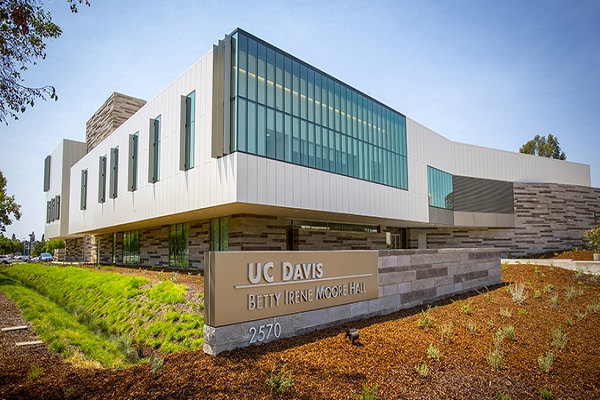University of California, Davis: Endangered Mouse Study Shares No-Contact Sampling Method
From species of marmots to moles, shrews and mice, many of the world’s endangered mammals are small. Genetic sampling is important for understanding how to conserve and protect their populations. But finding efficient, noninvasive ways to collect genetic samples from small animals can be challenging.
A study from the University of California, Davis, describes a new, noninvasive genetic survey technique for the endangered salt marsh harvest mouse, which lives solely within the tidal marshes of the San Francisco Bay Estuary.
In larger mammals, scientists often collect samples from scat, but the poop of small animals can be so small that it is difficult to detect in the wild.
The new technique, published in the Journal of Mammalogy, uses a combination of bait stations and genetics to sample and identify salt marsh harvest mice, or “salties” as researchers affectionately call them. The species has lost more than 90% of its habitat to development and is also threatened by rising sea levels. That’s why it is imperative that the remaining populations are identified accurately and efficiently, the authors note.
The technique is simple: Scientists bait boxes with a snack of seeds, millet and oats, and lay down cotton bedding. The mice are free to come and go. A researcher returns a week later to collect the fecal pellets for genetic sampling at the lab. There, a unique species identification test differentiates salt marsh harvest mice samples from those of other rodents that may have used the bait box.
Contrast that process with the more common and intensive method of live trapping: A team of three to five researchers checks traps at sunrise and sunset for several consecutive days. To prevent animal drownings, those traps must be placed above the tideline, ruling out several areas of tidal marsh habitat. But with the new, noninvasive technique, mice can leave at any time, allowing researchers to monitor more marshes and more mice, safely and efficiently.
I hope someone studying an endangered small animal somewhere reads this study and goes, ‘That’s something I can do.’ — Cody Aylward
“Our genetic identification method is simple, inexpensive, and can be adapted to other small mammal systems,” said lead author Cody Aylward, a recent graduate and former doctoral student of the Mammalian Ecology and Conservation Unit in the UC Davis School of Veterinary Medicine. “I hope someone studying an endangered small animal somewhere reads this study and goes, ‘That’s something I can do.’”
Small wonder
Little is known about salt marsh harvest mice, so the impacts of their potential loss are also unclear. Scientists know the species is unusual in several ways. For example, salties are strong swimmers, can drink seawater and have a unique genetic lineage, as Aylward explains:
“Genetic data says there’s 3.5 million years divergence between them and their closest relative,” he said. “So if we lose them, that’s 3.5 million years of evolutionary history that’s lost.”
Co-authors include principal investigator Mark Statham, Robert Grahn and Benjamin Sacks from the UC Davis School of Veterinary Medicine; Douglas Kelt from the UC Davis Department of Wildlife, Fish and Conservation Biology; and Laureen Barthman-Thompson of the California Department of Fish and Wildlife.

